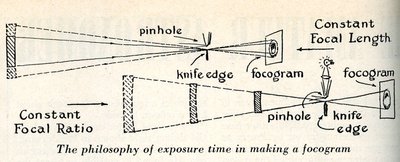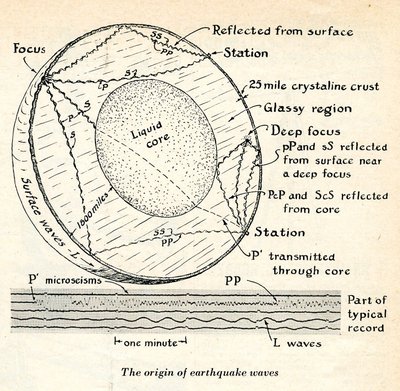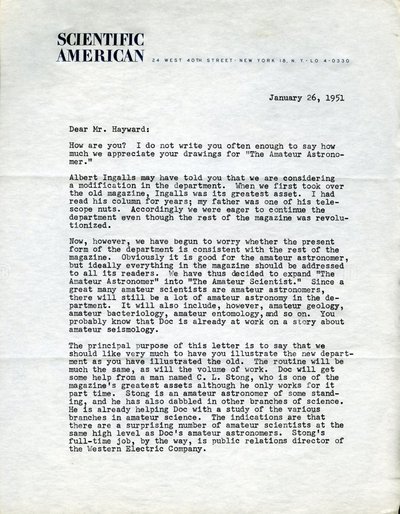In 1955 Roger began consulting with Disney, primarily on a project to construct another model of the moon. Walt Disney was planning several films to showcase his then-new Disneyland Theme Park, including Future World, which featured a ride that simulated a launch, approach and orbit around the moon. Roger had built two of the largest models of the moon up to that time, and Disney was making reproductions of them both for use in the park. Initially Disney had hoped to cast the existing models without consulting Roger, but following several poor quality attempts, Roger was brought in to see the project through. He was ultimately successful with the recreations and subsequently invited to a screening of “Man and the Moon,” an animated history that featured Roger’s models, before its release to the public on Walt Disney’s ABC television show in 1955 and 1956.
At Scientific American, staff changes and the progression of the magazine in general, led the “Amateur Astronomer” column to be renamed “The Amateur Scientist” in 1952. Albert Ingalls, the editor of “The Amateur Astronomer,” stayed on for the change, but a man named C. L. Stong was invited to aid him with the transition. Roger was warmly requested to continue making illustrations for the column, and though he enjoyed his work with astronomy, he welcomed and embraced the broadened focus of content, a change that allowed him to fully engage with his joy of amateur science and illustrating, and to get paid for doing it. He was very satisfied with the new arrangement, as was the Scientific American staff, which openly appreciated and admired his work. Of his completed assignments for “The Amateur Astronomer,” Editor Dennis Flanagan told Roger that “the drawings are creative art, and they have improved that section of our magazine more than I can easily say.”
The nature and unique quality of Roger’s illustration work also made him subject to patent and copyright disputes. There were several instances during his career with W. H. Freeman & Co. and Scientific American where plagiarism and violation of copyright laws with regard to Roger’s illustrations were found among various publishers. Most of the disputes were international in nature, but there was one instance involving the U.S. publisher Houghton Mifflin in which an entire book’s illustrations were copied with almost no attempt to distort or alter the quality of the images. The legal teams procured by Roger’s employers made these breaches less stressful for him, but he had less support when his own personal patents were involved. A series of disputes arose concerning his shared patent with John Strong and two new patents – a panoramic telescope and binocular devices – that stemmed directly from some of his early war work at Mt. Wilson and were also subject to altercations, but ultimately managed by the Department of the Army.

Reproduced illustration by Roger Hayward of the philosophy of exposure time in making a focogram as published in Scientific American, 1952.


